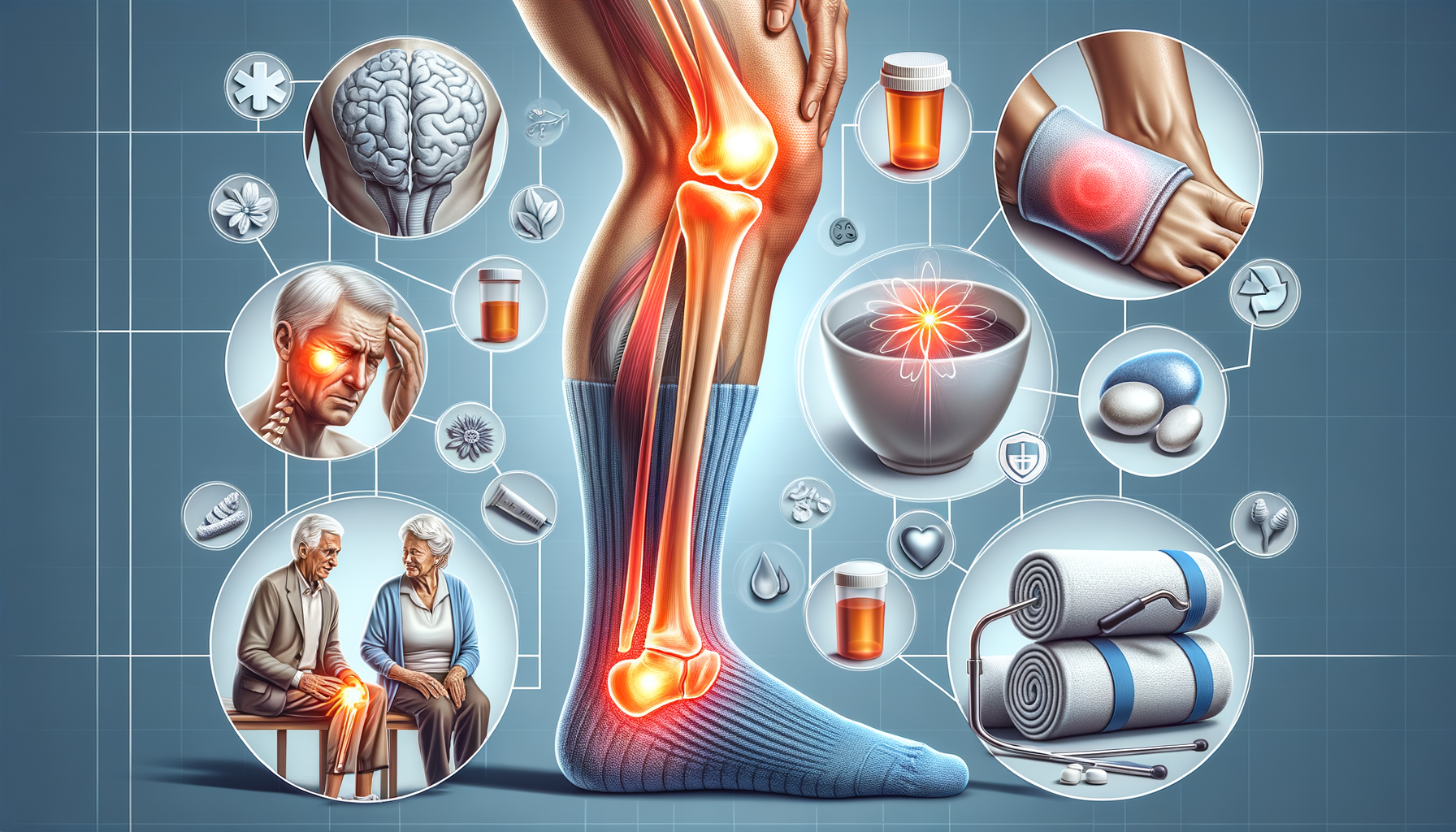Introduction to Chronic Leg Pain in Seniors
As we age, our bodies undergo numerous changes, some of which can lead to discomfort or pain. Chronic leg pain is a common issue among seniors, affecting their mobility and quality of life. Understanding the causes, treatments, and when to seek medical advice is crucial in managing this condition effectively.
Chronic leg pain can be caused by various factors, including arthritis, poor circulation, or nerve damage. These conditions can make simple tasks like walking or standing an ordeal, leading to a sedentary lifestyle that may exacerbate other health issues. In this article, we will explore the causes of chronic leg pain, compare treatment options, and discuss when it’s necessary to consult a healthcare professional.
Causes of Chronic Leg Pain in Seniors
Chronic leg pain in seniors can arise from several medical conditions. Some of the most common causes include:
- Arthritis: This condition causes inflammation and pain in the joints, often affecting the knees and hips, which can lead to leg pain.
- Peripheral Artery Disease (PAD): PAD is a circulatory problem where narrowed arteries reduce blood flow to the limbs, causing pain during physical activity.
- Diabetic Neuropathy: High blood sugar levels can damage nerves, particularly in the legs and feet, leading to pain and numbness.
- Venous Insufficiency: This occurs when veins in the legs are unable to return blood to the heart efficiently, causing swelling and discomfort.
Understanding these causes is the first step in finding effective relief. Each condition may require a different approach to treatment, emphasizing the importance of a proper diagnosis.
Chronic Leg Pain Relief for Seniors
Finding relief from chronic leg pain involves a combination of lifestyle changes, medical treatments, and sometimes surgical interventions. Here are some methods seniors can consider:
- Exercise and Physical Therapy: Engaging in low-impact exercises such as swimming or walking can improve circulation and strengthen muscles, reducing pain. Physical therapy can also help by providing tailored exercises to enhance mobility.
- Medication: Over-the-counter pain relievers or prescribed medications can help manage pain and inflammation. However, it’s essential to consult a healthcare provider before starting any medication.
- Compression Stockings: These can improve blood flow in the legs, reducing pain and swelling associated with venous insufficiency.
- Diet and Weight Management: Maintaining a healthy weight can alleviate pressure on the joints and improve overall health.
These solutions offer a multi-faceted approach to managing chronic leg pain, allowing seniors to maintain an active and fulfilling lifestyle.
Top Leg Pain Treatments Near Me
For seniors seeking professional help, numerous treatment options are available. Finding a local healthcare provider who specializes in leg pain can ensure personalized and effective care. Consider these options:
- Orthopedic Specialists: These professionals can diagnose and treat conditions affecting the musculoskeletal system, offering solutions like braces or surgery if necessary.
- Vascular Surgeons: If poor circulation is the cause, a vascular surgeon can provide treatments such as angioplasty to improve blood flow.
- Pain Management Clinics: These facilities offer a comprehensive approach to pain relief, including medication management, physical therapy, and alternative treatments like acupuncture.
- Rehabilitation Centers: These centers provide services tailored to improving mobility and reducing pain through physical therapy and exercise programs.
Utilizing local resources can make a significant difference in managing chronic leg pain effectively, ensuring seniors receive the care they need close to home.
When to See a Doctor for Leg Pain?
Knowing when to seek medical advice is crucial in preventing chronic leg pain from worsening. Here are some signs that indicate it’s time to consult a healthcare professional:
- Persistent Pain: If leg pain lasts more than a few weeks despite home remedies, it’s essential to seek medical attention.
- Severe Pain or Swelling: Sudden, intense pain or swelling in the legs may indicate a serious condition like a blood clot.
- Difficulty Walking: If leg pain interferes with daily activities or mobility, a doctor can provide solutions to improve quality of life.
- Changes in Skin Color or Temperature: These symptoms could signal circulation issues that require medical evaluation.
Early intervention can prevent complications and improve outcomes, making it vital for seniors to be proactive about their leg health.
Conclusion
Chronic leg pain in seniors is a common but manageable condition. By understanding the causes, exploring treatment options, and knowing when to seek medical advice, seniors can take control of their leg health. Whether it’s through lifestyle changes, professional treatments, or a combination of both, relief is within reach. Staying informed and proactive is key to maintaining mobility and enjoying a better quality of life.








